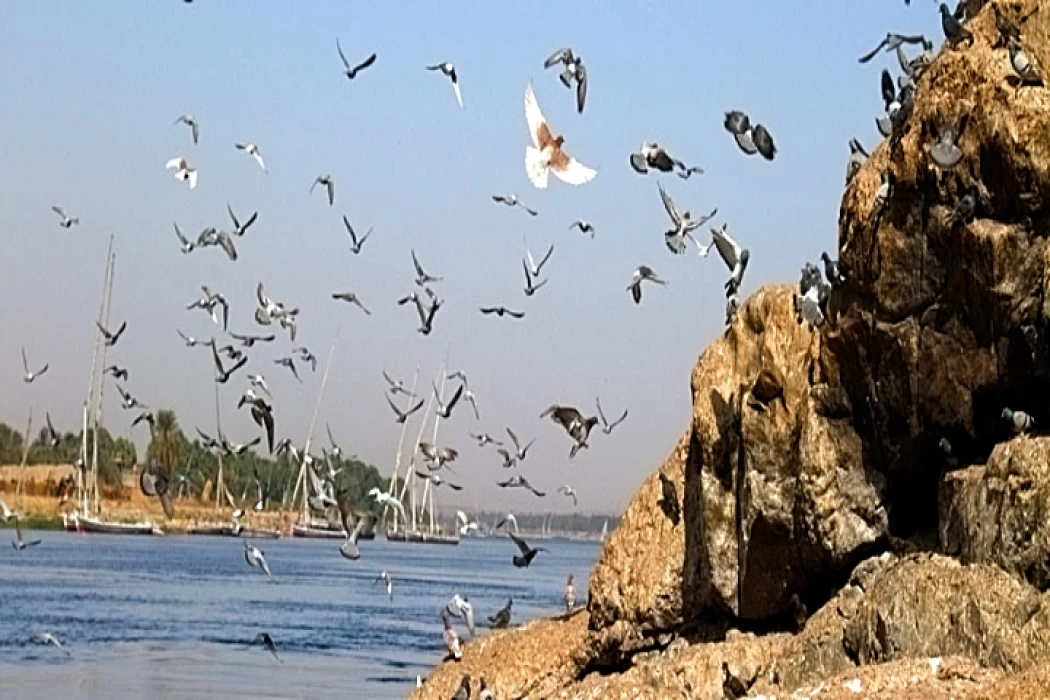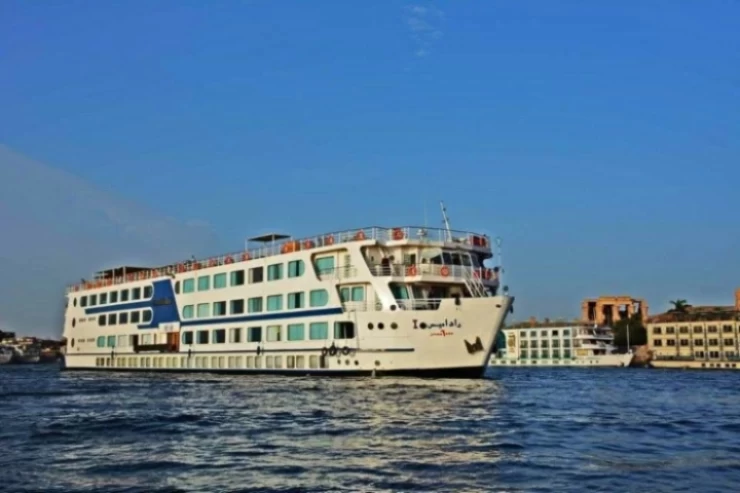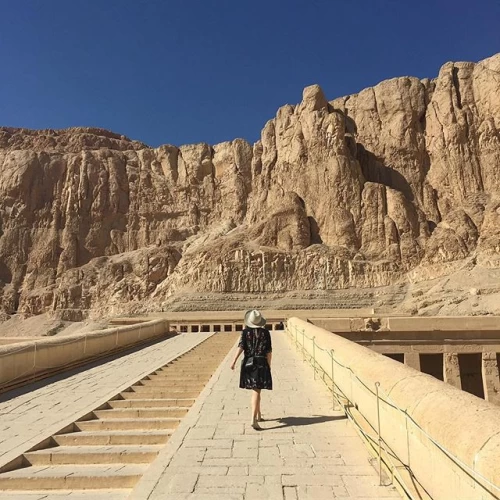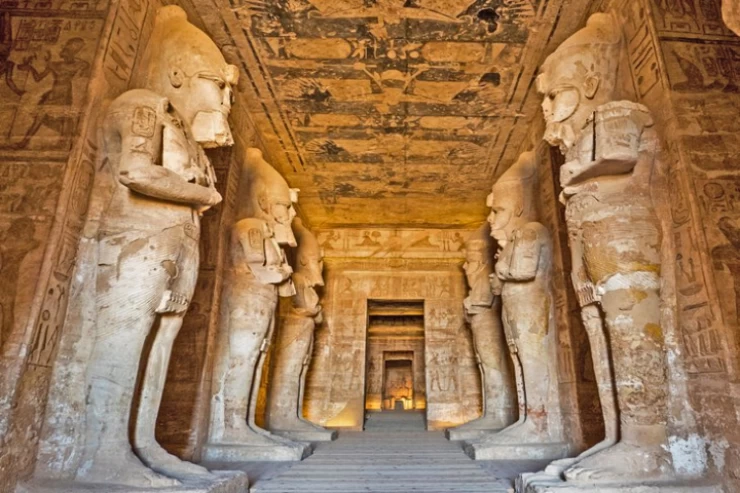
Turismo em Assuão | Turismo de Assuão
Turismo em Assuão
Turismo em Assuão
Assuão não é apenas uma cidade surpreendente, Assuão significa a beleza da natureza e a grandeza da história retratada na antiga civilização faraónica, Assuão significa o calor do Inverno e o esplendor do Nilo.
Turismo em Assuão
O turismo em Assuão é uma das melhores decisões que se pode tomar.
A sua localização:
Assuão é uma cidade no sul do Egipto, cerca de 870 km a sul do Cairo, e aproximadamente 180 km a sul de Luxor.
Panorâmica histórica:-
Assuã é a antiga cidade de Swenet. Swenet estava localizada na principal rota comercial entre o Egipto e o sul, pelo que a cidade antiga era a porta de entrada para África. Os coptas chamavam-lhe "souan" que significa "comércio", do qual deriva o actual Assuão.
O clima em Assuão:
O clima em Assuão é considerado um clima desértico. não há praticamente chuvas durante o ano. a temperatura média anual é de 26,8 C, durante o mês de Janeiro, Fevereiro, e Dezembro. A temperatura média situa-se entre os 20ºC e os 25ºC.
Atracçõesswan:
O Museu Núbio
Em 1997, foi criado um museu internacional de Núbia. O museu núbio foi dedicado à civilização e cultura núbia.
O obelisco inacabado
O Obelisco inacabado é o maior obelisco antigo, é um terço maior do que qualquer obelisco egípcio antigo criado.
Ilha do Elefantino
A Ilha do Elefantino é uma ilha no Nilo, contém muitos sítios arqueológicos.
Ilha de El Nabatat
Kitchener's Island ou ilha Botânica é uma pequena ilha de forma oval.
Ilha de Philae
Philae é uma ilha no reservatório da barragem baixa de Assuão. O Templo de Philae que é dedicado à Deusa Ísis costumava estar dentro da ilha antes de ser transferido para outro lugar chamado Ilha Agilika.
Museu de Assuão
O Museu de Aswan é um museu em Elephantine. O Museu de Assuão foi aberto ao público em 1912.
Outros pontos de referência e monumentos
- Túmulos dos Nobres.
- O templo da ilha.
- A ilha do Sehel
- Agha khan Mausoléu
- Cemitério de Fatimid
- Barragem de Aswan
- Barragem de Aswan High
- Templo de Satis
- Templo de Hekayib
- Nilómetro de Khnum
- Qubbet Al Hawa
- Mosteiro de Simeão
- Templo de Kom Ombo
Que grande cidade? Uma cidade e mais de 20 lugares turísticos a visitar. Um cruzeiro pelo Nilo, sítios antigos, sol, cada vez mais pode ser feito em Assuão.
Gostaria de viver uma viagem através da cultura e mitologia egípcia antiga? pode fazê-lo e passar um dia a visitar Abydos, Giza, Luxor, Assuão para ver os túmulos dos faraós adornados com cenas muito claras, detalhadas e belamente pintadas das várias divindades do antigo Egipto, bem como muitos outros locais, cidades, aventuras e coisas para fazer no Cairo, pode tentar reservar um dos nossos pacotes de excursões ao Egipto e pacotes de viagens ao Egipto muitos grupos privados de excursões guiadas de um dia no Cairo a partir do aeroporto e excursões de um dia no Egipto para explorar a capital do Egipto, Cairo pode verificar muitos dos itinerários de excursões ao Egipto ou fazer uma das nossas excursões completas de um dia no Cairo como:
Aswan is the land of gold, the land of good people. On its land, there are many different civilizations and cultures, and its warm, stable weather is unparalleled in the winter. With all these elements and others, Aswan has become a tourist destination that attracts the attention of the world.
Enjoy a wonderful vacation in the far south of Egypt, where these places vary between cultural, historical, and recreational.
Aswan is one of the beautiful and peaceful destinations in Egypt and lies farthest in the south of the country on the River Nile. With dramatic scenic beauty, ancient history, and an actively living Nubian culture, it is the kind of retreat no traveler ever forgets.
History
Pharaonic Egypt
The importance of this region emerged during the Old Kingdom, securing the southern border. It served as a center for armies when the kings of the Middle Kingdom attempted to extend their power southward. It was particularly important in the Egyptian war to drive out the Hyksos.
Ptolemaic Egypt
During the Ptolemaic era, the island of Philae—the seat of worship of the goddess Isis—received much attention, and they completed its great temple.
Roman Egypt
During the Roman era, temples were built in the ancient Egyptian style to attract the Egyptians. Emperor Trajan built a small temple on Philae Island.
With the spread of Christianity, it became the official religion in the fifth century AD, and Egyptian temples were transformed into churches.
The Islamic Era
Islam then spread from its inception; evidence written in Kufic script dating back to the early first century AH has been found.
Aswan flourished during the Islamic era, becoming a route to Azab on the Red Sea coast in the 10th century AD, from where ships sailed to the Hijaz, Yemen, and India.
During the sixth and seventh centuries AH, it was a significant cultural hub with three schools, the oldest of which were the Aswan School, Saifiya School, and Najmiya School in Aswan.
Modern Era
Muhammad Ali established the first military school in Egypt there in 1837.
Aswan is a gateway to the most famous historical sites of Egypt. Among its prime sites is the Philae Temple, which honored goddess Isis. The temple rests on an island with the Nile in the background. However, the historical value of the temple pales in front of its scenic beauty. The glory of the temple and its legends are rekindled during the Sound and Light Show at nightfall.
The Unfinished Obelisk, another interesting site, gives credit to the awe-inspiring stone craftsmanship of the ancient Egyptians. To the north lies the Temple of Kom Ombo, a unique temple dedicated to the two gods, Sobek and Horus. Abu Simbel's stunning temples are a must-have for any visit to Aswan. These colossal monuments carved right into the mountains speak for the architectural genius of Ramesses II and stand as a testament to his reign.
In the charming south, the river differs in form and subject from its nature in any other governorate in terms of purity and color, which, along with the color of the sky, form an artistic painting created by the Creator. Therefore, the Nile in the south forces you to visit it more than once.
The Nile takes on a peaceful beauty in Aswan. A ride on a felucca on its calm waters is one of the most suitable means of taking in the natural beauty of the location, especially when the sun sets into the riverbanks.
There are contemporary marvels that add to Aswan's beauty. The Aswan High Dam is an engineering marvel that not only controls the Nile waters but also created Lake Nasser, one of the world's largest artificial lakes. You can visit lesser-known gems from here like the Kalabsha Temple, hidden by the lake shores.
In Nubia, you'll find all the comforts, tranquility, and clear weather, making it an unparalleled eco-tourism destination in the far south of Egypt. As you set foot in Nubia and its villages, you'll find Nubian houses designed in the shape of domes, in cheerful colors, overlooking the Nile... You'll find women wearing the traditional Nubian gergar, and the markets are filled with handcrafted products and eco-friendly items, just as their fathers and grandfathers did.
Some of the murals tell the story of the amazing generosity and hospitality of the Nubian people, and their refined treatment of foreigners visiting their country. Enjoy the picturesque environment in the villages overlooking the Nile River, and spend a pleasant time surrounded by pure and attractive nature, generous hospitality, and the preparation of distinctive drinks and foods unique to the Nubian people, inherited from their fathers and grandfathers.
Aswan is Nubia's cultural capital, a city that is steeped in history and tradition. You should go to a Nubian village, where you can feel the hospitality of the people, the colorfulness of their houses, and their rich heritage. Taste traditional Nubian food, hear their distinct music, and see handmade handicrafts that narrate their history. It's something that stays with you.
One of Aswan's oldest marketplaces, the old tourist market is becoming more well-known and respected over time.
It's the biggest, busiest, and most dynamic commercial market. Aswan is full of tourist and natural attractions and tourist attractions, most notably the Tourist Market Street, which includes a large number of bazaars and markets specialized in selling gifts and souvenirs that carry the traditional style of the people of Aswan, in addition to handmade products such as accessories, porcelain, and clothes, as well as leather products and antiques, and selling local products such as clothes, handicrafts, ceramic utensils, gifts and souvenirs. There are also a lot of eateries on Aswan's Tourist Market Street. This is on top of leather goods, textiles, and fragrance items.
Aswan Market is a vibrant destination where the scent of spices fills the air and the eyes are treated to local handicrafts. Explore the souk to find treasures like handcrafted jewelry, colorful Nubian fabrics, and scented hibiscus tea—a local favorite and wonderful souvenir.


















